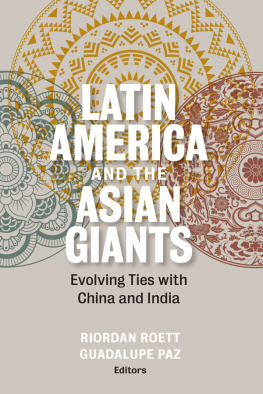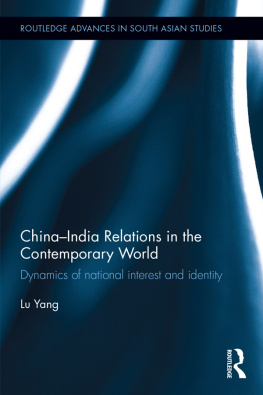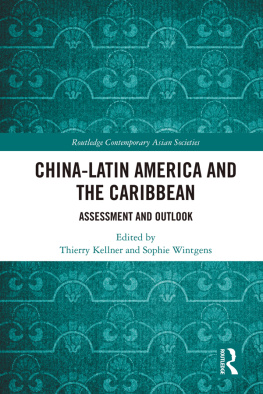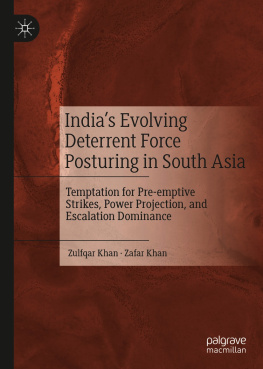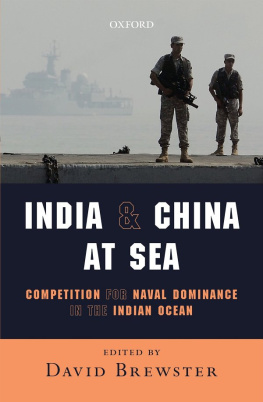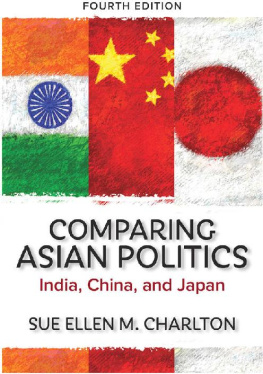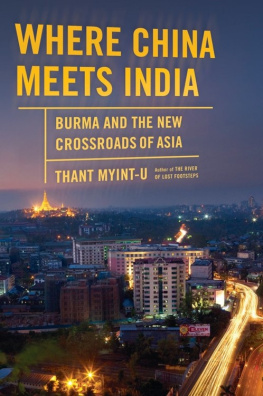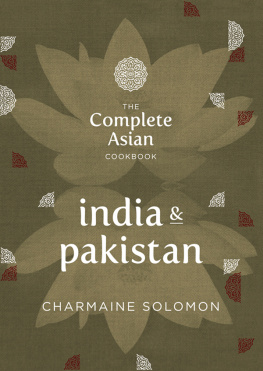Copyright 2016
THE BROOKINGS INSTITUTION
1775 Massachusetts Avenue, N.W., Washington, D.C. 20036
www.brookings.edu
All rights reserved. No part of this publication may be reproduced or transmitted in any form or by any means without permission in writing from the Brookings Institution Press.
The Brookings Institution is a private nonprofit organization devoted to research, education, and publication on important issues of domestic and foreign policy. Its principal purpose is to bring the highest quality independent research and analysis to bear on current and emerging policy problems. Interpretations or conclusions in Brookings publications should be understood to be solely those of the authors.
Library of Congress Cataloging-in-Publication data are available.
ISBN 978-0-8157-2696-8 (pbk. : alk. paper)
ISBN 978-0-8157-2697-5 (epub)
9 8 7 6 5 4 3 2 1
Typeset in Sabon
Composition by Westchester Publishing Services
CONTENTS
G UADALUPE P AZ
R IORDAN R OETT
J ORGE H EINE and H ARI S ESHASAYEE
S UN H ONGBO
X IANG L ANXIN
J ORGE G UAJARDO
K EVIN P . G ALLAGHER and R EBECCA R AY
D EEPAK B HOJWANI
R ENGARAJ V ISWANATHAN
A NTHONY B OADLE
F RANCISCO E . G ONZLEZ
M ARIANO T URZI
R OBERT D EVLIN and T HEODORE K AHN
J ACQUELINE M AZZA
R . E VAN E LLIS
A LICIA F ROHMANN and M ANFRED W ILHELMY
E NRIQUE D USSEL P ETERS
H ENRIQUE A LTEMANI DE O LIVEIRA
M AURICIO M ESQUITA M OREIRA and T HEODORE K AHN
ACKNOWLEDGMENTS
W e are indebted to numerous individuals and institutions that played a role in the completion of this volume. It would be impossible to name them all, but we would like to highlight those whose contributions were indispensable. We owe our greatest debt of gratitude to the Zemurray Foundation, whose generous support was instrumental in launching this book project. We would also like to thank Stephanie and Ludovico Feoli for their unfailing support and interest in our various academic endeavors. To our fellow authors we owe thanks not only for their valuable contributions but also for their patience during the lengthy editing process. A number of other experts provided input during the planning phase, as did the manuscript reviewers: we are grateful for their thoughtful efforts. Bill Finan and his team at the Brookings Institution Press were a pleasure to work with. We also thank Charles and Julian Roberts for their superb translation work. The research assistance provided by Ge Pepe Zhang was particularly helpful, as was the general support provided by the Johns Hopkins-SAIS Latin American Studies Program team, especially John McGeoch and Anne McKenzie. Finally, a very special thank you is owed to Theodore Kahn, a contributing author, for his additional assistance in finalizing the manuscript.
CHAPTER 1
Introduction
A SSESSING L ATIN A MERICAS R ELATIONS WITH THE A SIAN G IANTS
Guadalupe Paz
Since China adopted a going global strategy at the start of the twenty-first century, much has been written about its rapidly growing international presence, particularly in developing regions such as Southeast Asia, Africa, and Latin America. SinoLatin American relations deepened considerably in recent years, to the point that we can refer to the first decade of the twenty-first century as Latin Americas China decade (as Kevin Gallagher and Rebecca Ray do in However, as predicted early on, Latin Americas trade relationship with China has been characterized by commodity-based exports from the region and manufactured imports from China that compete with local economic growth sectors. Although the China-driven commodity boom clearly helped the region weather the global financial crisis that erupted in 200809, Latin Americas policymakers are increasingly preoccupied with the unbalanced nature of their trade relationship with China, particularly as the Asian giant faces an economic slowdown and global commodity prices are on a downward trend.
India, on the other hand, is only just beginning to emerge as a potentially important player in Latin America. Whether or not it will become The question for Latin American policymakers is how to build a balanced partnership by applying some of the lessons learned from the regions relationship with China.
This volume explores key policy concerns with respect to Latin Americas evolving relationship with the Asian giants. In ) offers a set of possible future scenarios for Latin Americas relations with China and India. This introductory chapter presents an overview of the main questions explored in more detail in subsequent chapters, with the objective of providing a general basis for coherent analysis of the volume as a whole.
LATIN AMERICAS ASIA STRATEGY: CHANGING DYNAMICS
In , Riordan Roett provides a brief historical analysis leading up to Latin Americas recent interest in trade and investment with Asia, portraying it as a hallmark of the present century and a manifestation of an emerging economic development model in the region. An important historical reference is the so-called resource curse that plagued the region in the post-independence era (1820s to 1940s). The newly independent states opted for insertion into the global free trade system, relying on commodity exports and capital goods imports for their economic development. However, Latin America soon fell victim to external shocks that are part and parcel of global cyclical patterns. World War I, the Great Depression, and World War II were particularly difficult periods for the region.
By the 1940s, most countries in Latin America had turned away from an export-led growth model and had instead adopted an inward-looking development strategy known as import substitution industrialization, which eventually proved inadequate in the face of globalization and the regions inability to compete in the international trading system with locally produced higher-priced, lower-quality products. Following the debt crisis and the lost decade of the 1980s, the region adopted a new model of economic and political liberalization known as the Washington Consensus, with different levels of success. By the late 1990s, a number of countries in the region had begun to vocally condemn the liberalization trend and revert to state-ledand heavily populisteconomic development strategies, epitomized by the rise of Hugo Chvez in Venezuela. It is against this backdrop that Chinas emergence in the region changed Latin Americas development outlook.
Roett describes the regions pivot to Asia as a redirection of trade and investment as well as a recognition of geopolitical opportunities, underscoring the importance of the Trans-Pacific Partnership (TPP) and the Pacific Alliance as historical shifts redefining global priorities. As concerns about overreliance on the Chinese market grow, India is becoming an interesting trade and investment alternative for Latin America. According to Roett, it is imperative that the region maintain an outward-looking posture; as he writes, The TPP and the Pacific Alliance offer, selectively, an exit from failed or moribund regional groupings that remain highly exclusive and inward-looking.


